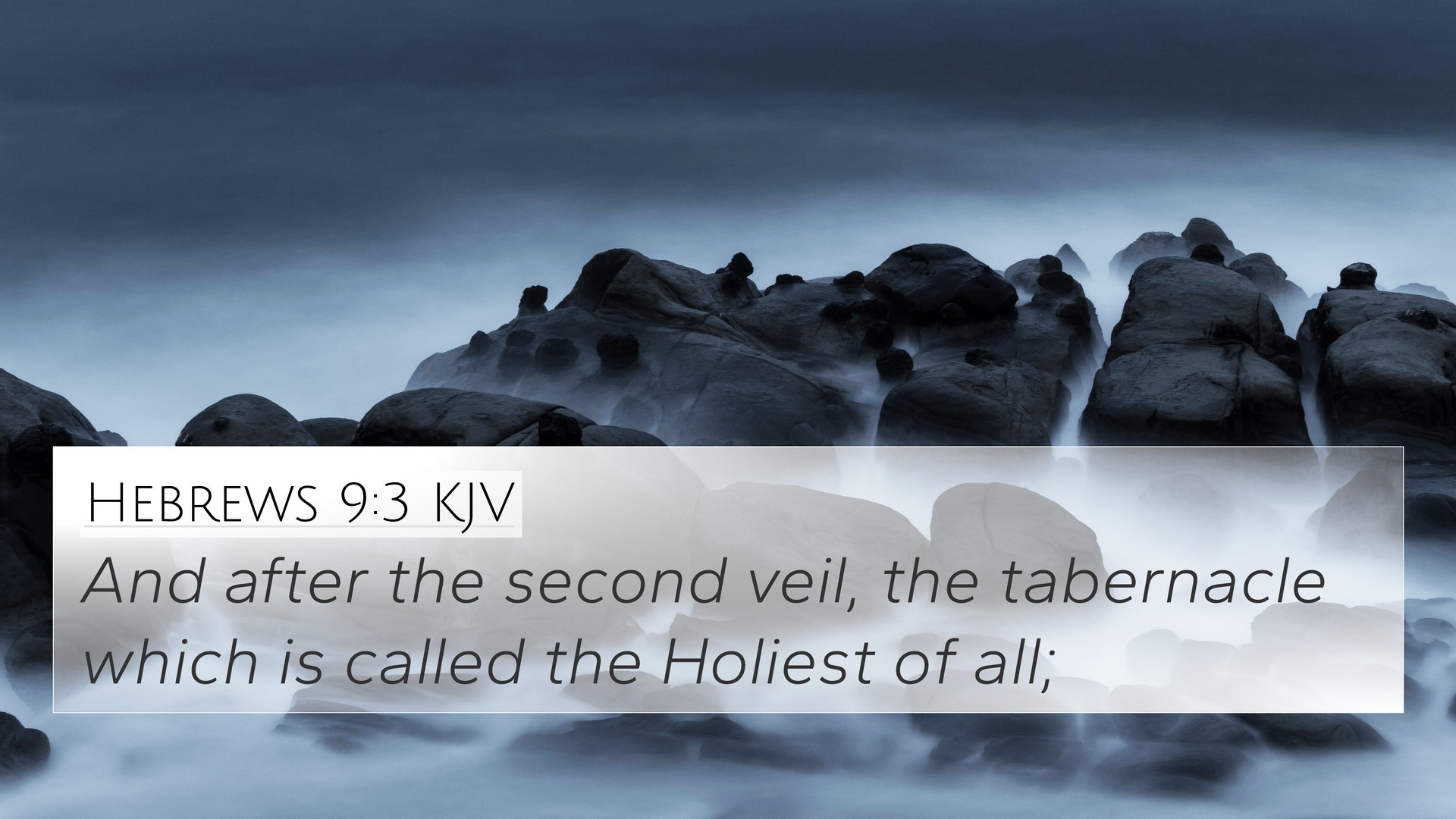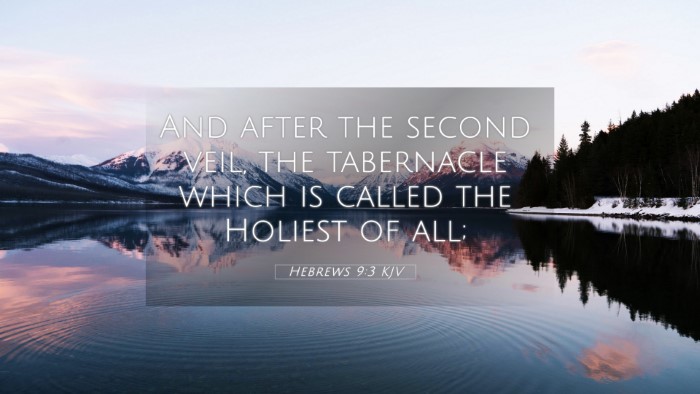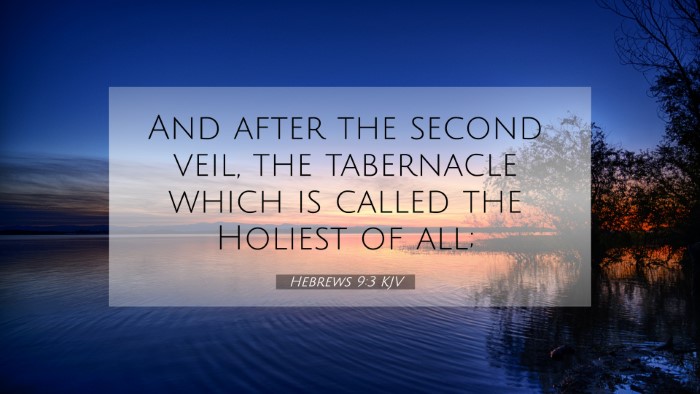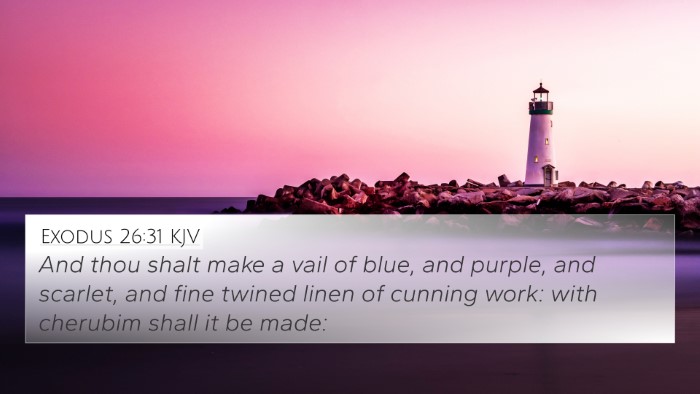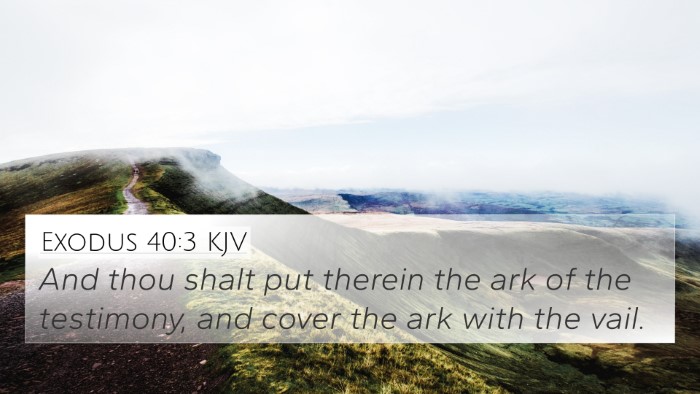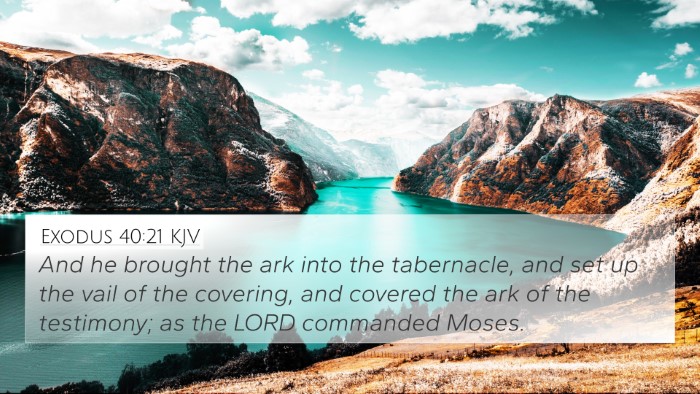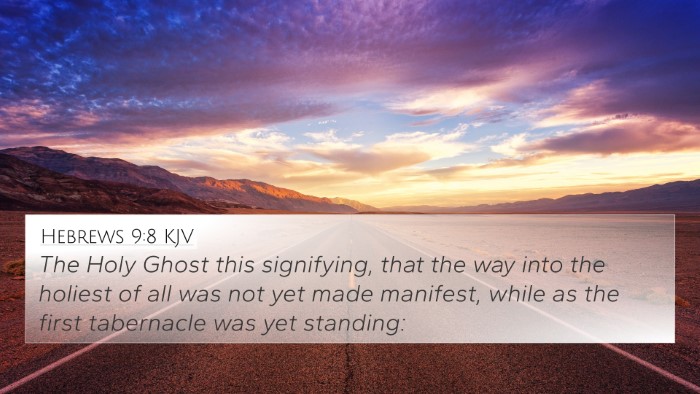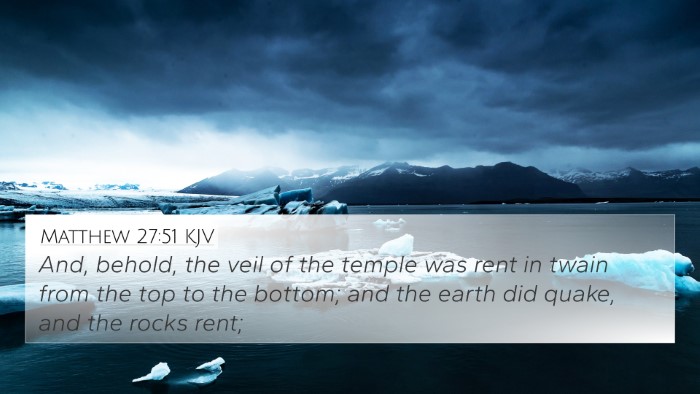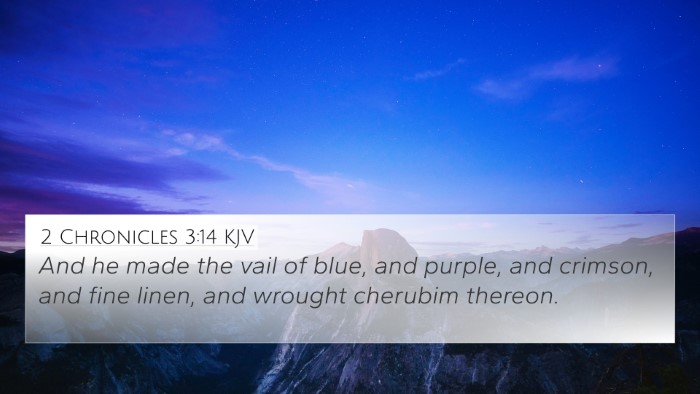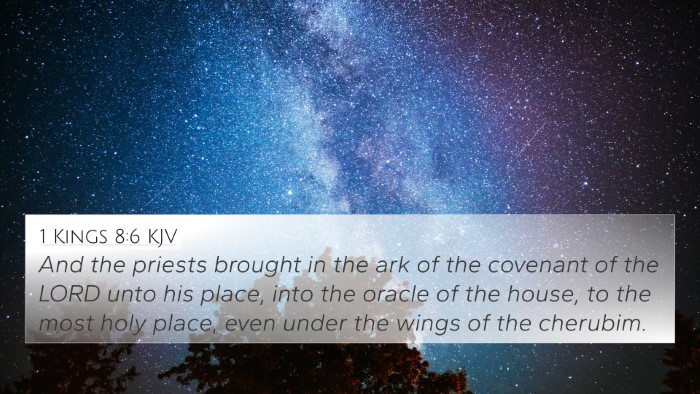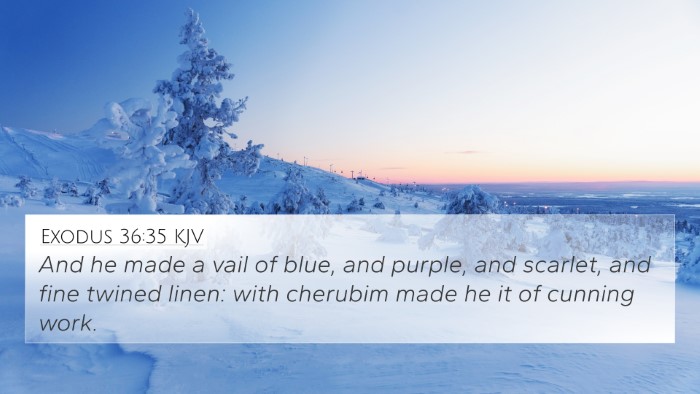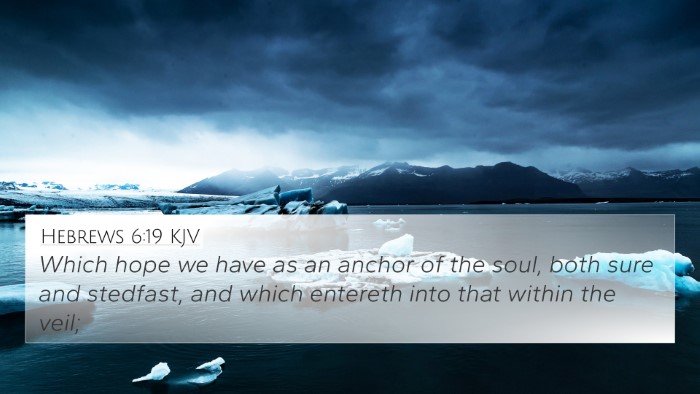Understanding Hebrews 9:3
Hebrews 9:3 states, "And after the second veil, the tabernacle which is called the Holiest of all;" This verse speaks to the structure and significance of the tabernacle in the context of Old Testament worship and its relation to New Testament theology. The author of Hebrews draws a vivid picture of the sacred space, reflecting on both its historical and spiritual implications. This analysis combines insights from several public domain commentaries.
Context and Importance
This verse is located within a passage that reflects on the old covenant's sacrificial system and foreshadows the ultimate sacrifice of Christ. The temple, particularly the areas described, denotes the separation between God and humanity due to sin. It also prepares us to understand how Jesus fulfills what the tabernacle symbolizes.
Commentary Insights
- Matthew Henry: Henry emphasizes the grandeur of the Holiest of All, noting that this was the place where God's presence dwelled. He underscores the significance of the veil that separated this holy space, which signifies the barrier between a holy God and sinful humanity. The sacrifices made in this tabernacle were insufficient to remove that barrier permanently.
- Albert Barnes: Barnes provides insight into the arrangement of the tabernacle, illustrating that the second veil represents a greater degree of holiness. He connects this to the ultimate revelation of Jesus Christ, who as the High Priest entered once for all into the Holy of Holies, thereby breaking the earthly veil and granting believers direct access to God.
- Adam Clarke: Clarke discusses the significance of the Holiest of all as a type of heaven, where God resides in glory. He explains that the furnishings of the Holy Place and the Holy of Holies serve to illustrate spiritual truths about Christ's atoning work and the new covenant.
Thematic Connections
Hebrews 9:3 serves as a bridge connecting various theological themes throughout Scripture. By exploring the relationship and symbolism present in the tabernacle and its various areas, we can see parallel themes emerge:
- Access to God: Hebrews 10:19-20 discusses how Christ's sacrifice allows us to enter the holiest place, removing the barrier that the veil represented.
- The Sacrificial System: Leviticus 16 discusses the Day of Atonement and the sacrifices made for the people’s sins, reflecting what the tabernacle represented.
- The New Covenant: Jeremiah 31:31 speaks of a new covenant that God will establish, which is fulfilled in Christ's ministry.
- The Blood of Christ: Ephesians 2:13 highlights how believers are brought near by the blood of Christ, emphasizing the atoning work completed.
- Christ as Our High Priest: Hebrews 4:14-16 expounds on Jesus' role as the High Priest who intercedes for us, linking back to the duties performed in the tabernacle.
- Holy Presence of God: Exodus 40:34 expresses how the glory of the Lord filled the tabernacle, indicative of God's presence among His people.
- The Veil Tearing: Matthew 27:51 illustrates the moment Jesus died and the temple veil was torn, signifying the end of the old order and new access for believers.
Cross-Referencing and Interconnections
When we perform a bible verse cross-references analysis of Hebrews 9:3, we can utilize various Bible reference resources to uncover deeper meanings and connections. Here’s how scriptures coalesce around this theme:
- Understanding Thematic Bible verse connections through the study of verses such as Exodus 25:10-22, where God describes the mercy seat and instructions for the Ark of the Covenant, parallels the sanctuary described in Hebrews.
- Connecting Old Testament instructions in Deuteronomy 10:1-5 that establish the ministry of priests and Levites provides a foundation for understanding the transition to Christ's ultimate priesthood.
- Narrative connections can be established between Hebrews 9 and John 14:6, where Christ proclaims Himself as the way, the truth, and the life, further expounding on the theme of divine access.
- Exploring cross-references such as Romans 3:25 that underscores Christ as the propitiation for our sins builds upon the significance of the sacrificial locations described in the tabernacle.
- Engaging with Bible concordance tools that highlight passages related to God's holiness can help illustrate the theme surrounding the Holiest of All.
- Identifying connections between Bible verses invites exploration of 1 Peter 2:9, where believers are called a royal priesthood, echoing the priestly elements within the tabernacle discussion.
- Utilizing a comprehensive Bible cross-reference guide assists in linking broader themes, such as forgiveness, redemption, and sacrifice, found both in the Old and New Testament contexts.
practical implications
The study of Hebrews 9:3 and its surrounding context not only enhances our theological understanding but also offers practical implications for believers today. Incorporating methods of cross-referencing Bible study can yield rich insights during personal devotions and sermon preparations. Here are a few ways to apply this knowledge:
- Personal Reflection: Contemplate the significance of Christ's work on the cross in light of the barriers represented by the tabernacle's design.
- Group Study: Engage in discussions about the relationship between Old Testament sacrifices and New Testament fulfillment through Christ, enriching communal Bible studies.
- Sermon Preparation: Utilize this verse and its connections to prepare sermons that tackle themes of access, holiness, and redemption.
- Prayer Focus: Use passages related to the Holiest of All to guide prayer, praising God for the access given through Jesus' sacrifice.
Conclusion
In conclusion, Hebrews 9:3 not only highlights the intricate design of the tabernacle but also serves as a profound commentary on God’s plan for redemption through Christ. By employing cross-referencing Bible study methods, believers can discover a greater understanding of how the Old and New Testament interrelate, providing a richer context for spiritual growth and worship.
